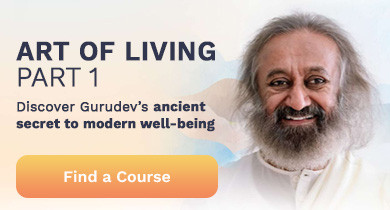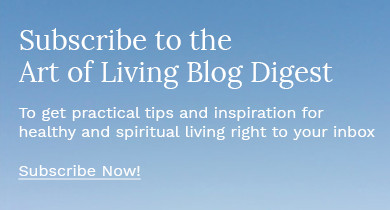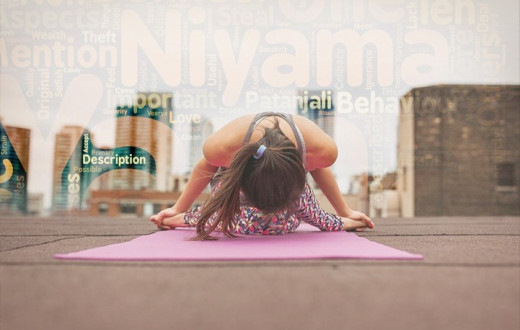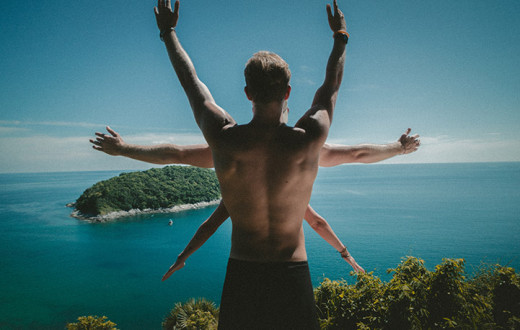Posted: July 24, 2020
Gomukhasana (go-moo-KHAS-ana) from Sanskrit literally means cow face posture (go - cow, mukha - face, asana - pose). This seated yoga posture can be performed along with different seated asanas as part of a regular yoga practice. It stretches the arms, triceps, latissimus dorsi, shoulders, and chest. This posture is a great hip opener and also opens up tight shoulders with some gradual and consistent practice. Requiring the practitioner to sit erect, it also enhances one’s posture.
Description: Gomukhasana is one of the 15 poses described in the Hatha Yoga Pradipika, the text that describes the centuries-old different physical practices of yoga. In this yoga pose, the feet (or elbows) on both sides represent the cow's ears and the knees stacked on top of each other resemble the cow’s lips or mouth. Hence the name cow face pose (gomukhasana).
How to do cow face pose (gomukhasana): step by step instructions
1. Sit on both your ischial tuberosities (your sitting bones) well-grounded on your yoga mat with your back straight and legs extended in front of you. Keep your legs and feet together and place each palm next to each hip. Make sure that the bottoms of your legs are firmly placed on the mat.
2. After lifting your left leg, bend your right leg under your left leg and place the right foot beside your left hip.
3. Stack your left knee over your right knee, placing your left foot beside your right hip.
4. Raise the left arm above your head and bend the elbow to lower your left hand between the shoulder blades. Simultaneously, bring the right arm behind your back and the right hand upward between the shoulder blades. Try to adjust your upper arm and lower arm in such a way that your left elbow is behind your head and is pointing at the ceiling whereas the right elbow is pointing at the mat or floor.
5. Bring the hands as close to each other as possible and if you can, interlock the fingers of both hands.
6. Keep breathing easily and normally or you can take deep ujjayi breaths and stay in the pose as long as you’re comfortable.
7. As you exhale, release your arms.
8. Uncross your legs and repeat for the other leg. Starting with the left leg this time, place your left foot under your right leg and beside your right hip.
9. Stack your right knee over your left knee, placing your right foot beside the left hip.
10. Raise the right arm above your head and bend the right elbow. At the same time, bring the left arm behind your back and interlock the fingers of both hands where they meet between the shoulder blades. Adjust your right and left elbow as explained in step 4, but reversing their positions.
11. Breath normally or take deep ujjayi breaths and stay in the pose only as long as is comfortable.
12. As you exhale, release your arms.
Beginner’s tip: In the beginning, your right hand may not be able to reach your left hand and/or vice-versa, but even so, don’t exert too much force. With practice, the fingers of both hands will be able to meet, interlock, and hold on for some length of time.
Benefits of cow face pose (gomukhasana)
1. Reduces pain from sciatica.
2. Relieves high blood-pressure.
3. Tones and massages reproductive organs with regular practice.
4. Loosens stiff shoulders.
5. Elongates spine.
6. Beneficial for those with bad posture.
7. Calms stress and anxiety.
9. Stimulates kidney function.
10. Strengthens back muscles, ankles, hips, thighs, shoulder joints, triceps, inner armpits, and chest.
Modifications
If your hands can’t reach each other between the shoulder blades, hold a strap behind your back to get the fingers of both hands as close as possible to each other without straining. Gradually move the hands closer on the strap each time you practice gomukhasana.
Contraindications
The practice of cow face pose when you have any of the following physical ailments can aggravate the condition. It’s important to avoid doing the posture with these problems:
1. Shoulder pain or injury: If you have excessive shoulder pain, refrain from cow face pose. If pain in the shoulder is mild, do the posture carefully with a trained yoga teacher’s supervision.
2. Pain in any of the key body parts: Don’t do the asana when you feel heavy pain in any body part that you'll stretch while doing the posture.
3. Soft tissue leg injury: Soft tissue injury means damage to muscles, ligaments, and tendons. It generally arises from a strain or sprain.
4. Muscle tears or pain in one or both thighs.
5. Bleeding hemorrhoids (sometimes known as piles).
6. Spondylitis (arthritis in the spine).
Preparatory poses and follow up poses
Staff pose / Dandasana (preparatory)
Butterfly pose / Baddha Konasana (preparatory)
Lotus pose / Padmasana (follow up)
Sitting half spinal twist / Ardha Matsyendrasana (follow up)
Sitting forward bend / Paschimottanasana (follow up)
Browse our entire yoga poses library and learn more about each yoga pose in detail.
While a regular yoga practice can result in improved health, know that it isn’t a substitute for medical treatment. It’s important to learn and practice yoga under the supervision of a trained teacher. In the case of a medical condition, practice yoga after consulting a doctor. Do you need information on courses? Contact us at programs@us.artofliving.org to find a Sri Sri Yoga course at an Art of Living Center near you. To know more about the Sri Sri Yoga Foundation Program, join this introductory yoga class for FREE.
Are you interested in becoming a 200 H certified yoga teacher? Sri Sri School of Yoga offers the most traditional (scripture-based), classical and authentic teacher training programs globally. Its certification is Yoga Alliance compliant.
Take your asana practice to a next level
When you follow up your asana practice with powerful breathwork and meditation, you will bring a lot of depth to your practice. Join Beyond Breath - a free online session with a live instructor, and experience a guided breathwork and meditation now. Here you will also learn about SKY Breath Meditation that has helped millions of people worldwide to reap the deeper benefits of yoga and take their yoga practice to a next level. Are you ready for it?





























